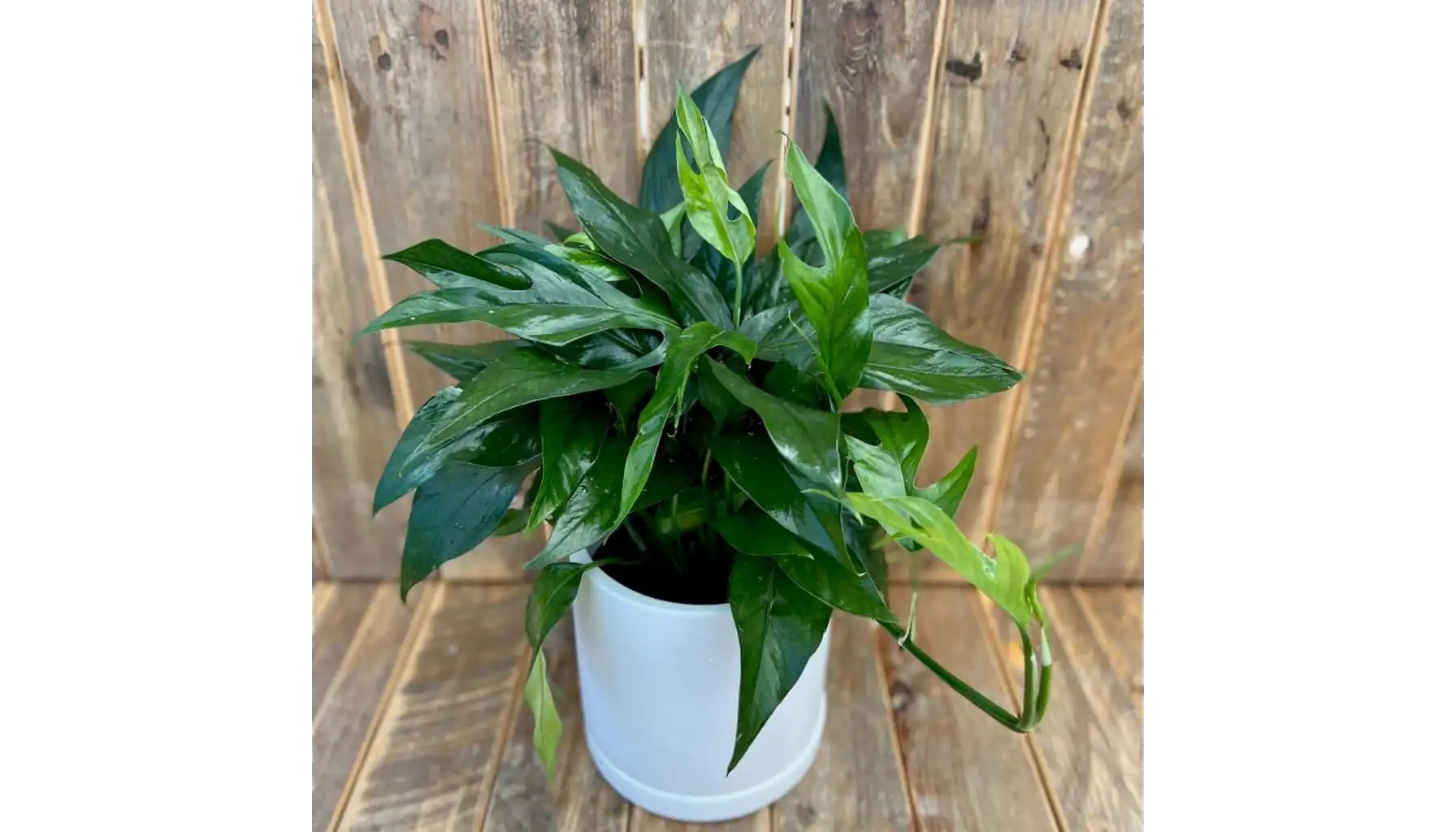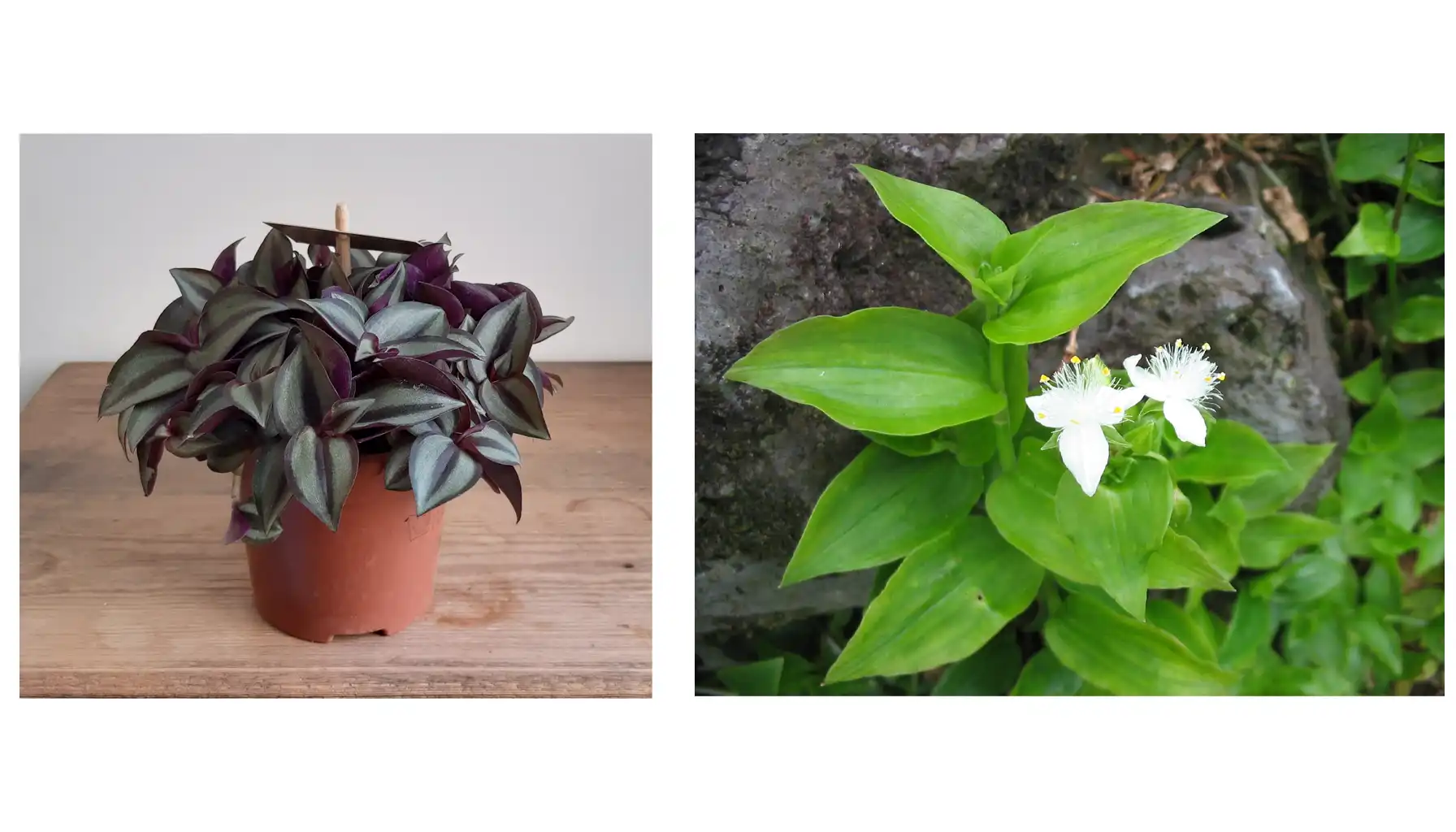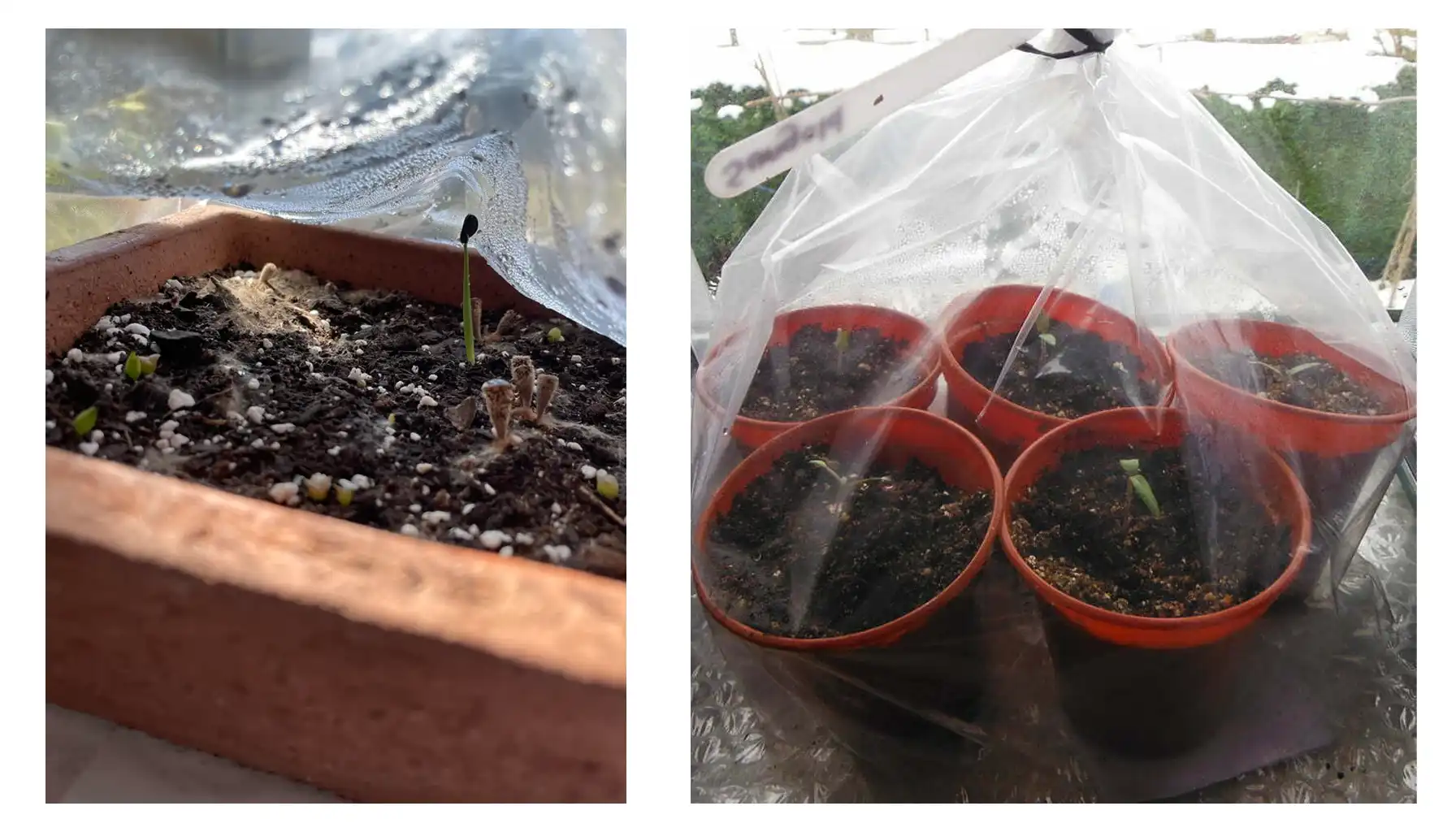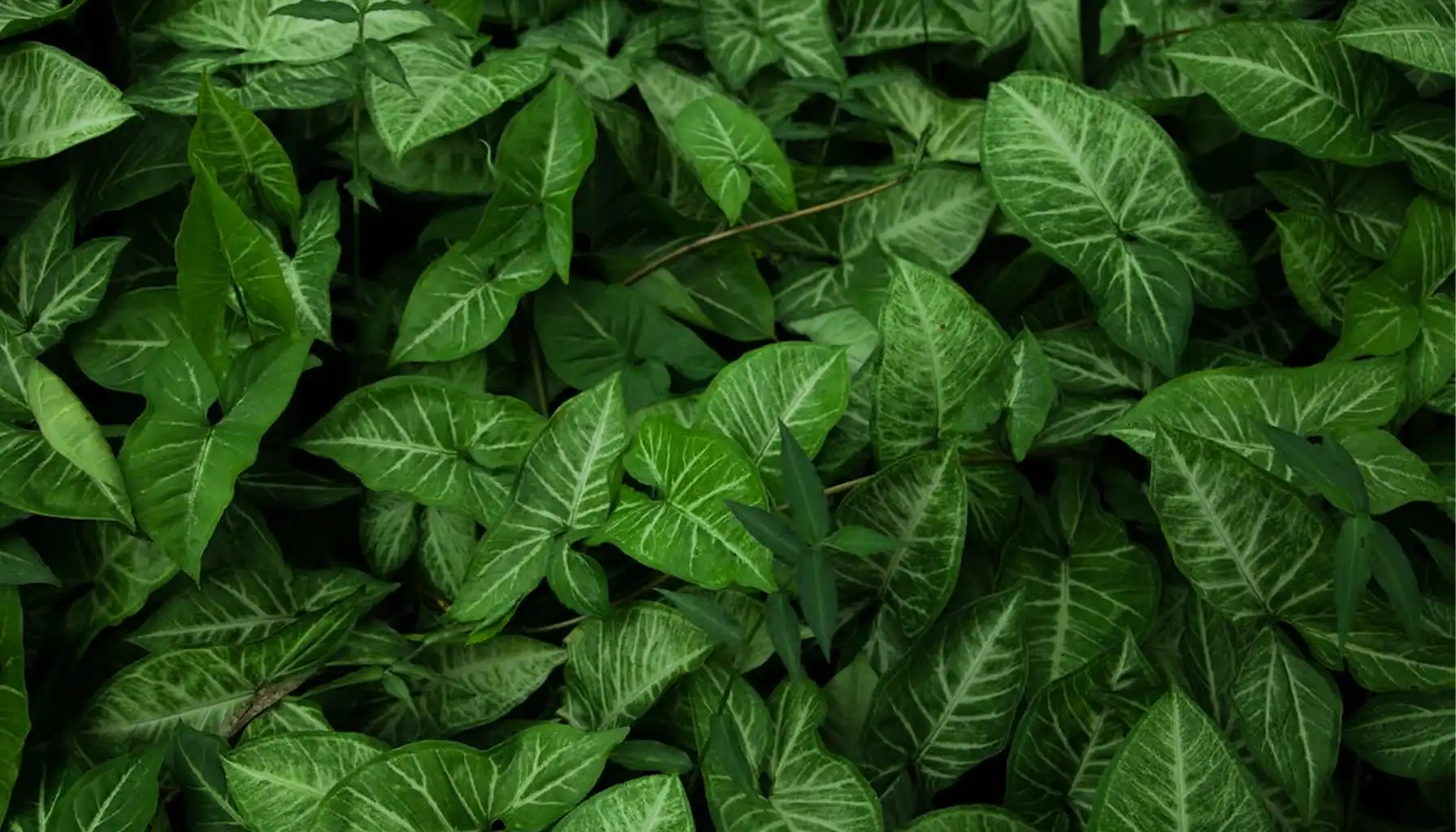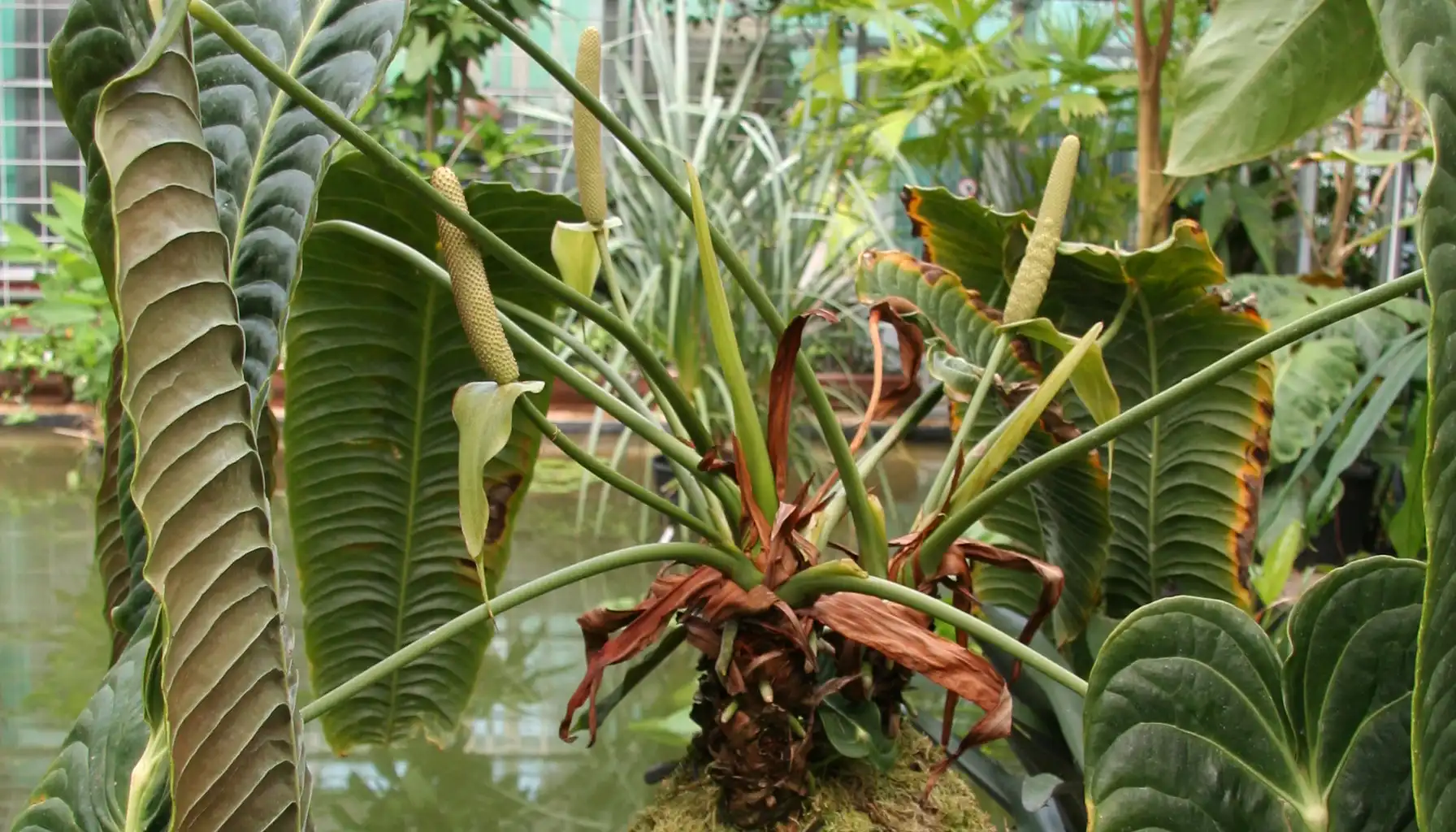It’s not every day that you see a plant that is beautiful and practical at the same time, but Tradescantia easily combines these qualities.
How to care for this flora and what can it bring to your house? Discover today in this article.
There are countless flowers and trees around us, but now we have an app to identify plants.
Plant Overview
Tradescantia has many names: wandering Jew, inch plant, spiderwort. It is a genus of fast-growing, trailing plants often used as ornamental plants. They're prized for their colorful foliage, low maintenance needs, and easy propagation.
Tradescantia Plant Overview |
Feature | Details |
Origin | Central and South America |
Type | Trailing perennial herb |
Size | 6–12 inches (15–30 cm) |
Life span | Perennial (lives for multiple years) in warm climates. Annual in cooler climates. |
Leaf Colors | Usually green with colourful stripes |
Flowers | Small pink, purple, white, or blue flowers with three petals |
Propagation | Done by stem cuttings |
Toxicity | Toxic to pets |
Special Features | Has many varieties and is very hardy (capable of rejuvenation) |
Tradescantia Types
As said, it’s a whole genus of plants and not just one specific variety. You may find these common types like:
Tradescantia zebrina: Known for its striped purple/silver leaves. Tradescantia zebrina care is very simple, making it one of the most popular varieties. Often covers ground in wide groups. May cause skin irritation with prolonged skin contact!
Tradescantia fluminensis. Has green, variegated leaves that feel soft. Often grows a cluster of white flowers. Like succulents, it spreads itself by breaking its stem parts. Considered invasive in some countries. Also known as Tradescantia pistachio white.
Tradescantia pallida. Features deep purple foliage. For this color, it’s also called Purple Heart Tradescantia. It has decorative uses and even got garden awards for its beauty. Tradescantia Pallida care needs a balance between shade and sun to produce the most vibrant coloration.
Tradescantia nanouk. Admired for its thick, slightly fuzzy leaves that display striking bands of pink. A modern hybrid. Compared to most other varieties, it’s more compact and upright, making Tradescantia Nanouk care a bit more manageable. Also sometimes called Tradescantia Bubblegum.
Tradescantia spathacea. Has sword-like leaves that are dark green on top and purple underneath. Compared to other tradescantia varieties, it is shorter but denser.
Tradescantia virginiana. Has narrow, arching, grass-like leaves and beautiful, vibrant purple-blue flowers (during the spring and early summer). It grows much taller than the indoor varieties, reaching up to 3 feet in height (90 cm).
Tradescantia pink panther. Has tiny leaves that combine soft shades of pink, green, and white. The leaves are among the most unique and pretty of all the varieties. Pink Tradescantia is also known as “Pink Fairy”.
Tradescantia sillamontana. Features gray-green leaves covered with white, fuzzy hairs. They help the plant retain moisture, making it more heat-resistant. It has a semi-succulent nature.
Tradescantia ohiensis. Has long, arching, grass-like leaves. One of the few non-toxic varieties. Propagates very quickly and effectively.
Some varieties are smaller, some are pretty, and some are dangerous. One fact stays true: it’s a very diverse flora.
New varieties are still coming, like Tradescantia Feeling Flirty. You can get some examples, but Feeling Flirty Tradescantia is still limited. It is green with white stripes and pinkish accents.
Tradescantia Care
This guide will tell you about the needs of this flora. The guide will be general, and tips from it can be used for any variety.
Light
Tradescantias thrive in bright, indirect light. Depending on their varieties, they can take more sunlight. For example, Nanouk Tradescantia tolerates only a few hours under direct sun at best.
Direct sunlight can be tolerated by some types (like Sillamontana), but most just get scorched marks on their leaves.
Watering
How often should you water your plants? Like with most other house flora, when the topsoil gets dry.
Tradescantia prefers consistent moisture but dislikes soggy soil. Overwatering can lead to root rot. During winter, reduce watering slightly, allowing the soil to dry out more between waterings.
Soil and Fertilizer
A well-draining potting mix is a safe choice for the soil. A standard indoor plant mix with some added perlite or coarse sand works well to improve drainage.
As for fertilizer, feed the plant every 2–4 weeks during the growing season (spring and summer) with a balanced, diluted liquid fertilizer. Reduce or stop feeding in fall and winter when growth slows down.
Temperature
This flora is originally from warm places like Mexico. They enjoy typical indoor temperatures between 60–80°F (15–27°C). Some varieties, like Purple Tradescantia, are very cold-intolerant and will likely die in winter if placed outside. Though miraculously, Tradescantia Purple Heart may revive itself in summer.
Protect your plants from freezing by relocating them to your house or covering them.
Propagation Guide
Many plants multiply by spreading parts of themselves. If you cut a part of the stem and take care of it, it will grow into a new bush. Here’s how you can do it:
1. Take a Cutting
Use clean, sharp scissors or pruning shears. Select a healthy stem and cut it just below a node (the part of the stem where a leaf grows).
Cuttings should be around 4 to 6 inches long and have at least one or two nodes.
Then you need to place the cutting in a growing source. It can be either water or soil.
2A. Rooting in Water
If you choose water, then place the cutting in a glass or jar of clean water. At least one node should be submerged.
Position the jar in a spot with bright, indirect light. Change the water every two to three days to prevent rot.
You’ll usually see roots starting to grow within a week. When the roots are about one to two inches long, you can transfer the cutting into soil.
2B. Rooting in Soil
Alternatively, you can plant the cutting directly in moist, well-draining soil.
Bury the node under the soil surface. Gently press the soil around the stem to secure it.
Keep the soil lightly moist (but not wet) during the rooting process. Roots typically form in about one to two weeks.
Covering the pot loosely with a clear plastic bag can help retain humidity but allow some airflow to prevent mold.
3. Potting and Aftercare
Once roots are established, plant the cutting into a small pot filled with quality potting mix that drains well.
Place the plant in a bright location out of direct sun. Resume regular watering and care as the plant settles in.
Congratulations. If you follow these steps, you should have a brand new plant to look after.
Toxicity and Safety
Is Tradescantia toxic to cats? Unfortunately, it is toxic.
These plants contain sap that can cause skin and oral irritation. While the poison is not deadly, it’s still harmful.
As a note, not all varieties are dangerous for animals. “Ohiensis” is generally safe for cats, for example.
Home Benefits
As said in the beginning, this plant combines beauty and good use. Let’s see the good it can bring into your house.
Benefit | Benefit Description |
Decorative Appeal | These plants have vibrant, colorful foliage in shades of purple, pink, green, and silver. It’s ideal for hanging baskets and shelves. Some, like Zebrina, can even be used as trailing plants. |
Air Purification | Helps filter indoor air and contributes to a healthier environment. |
Ground Cover (Outdoors) | Some types (like Fluminensis) work well as colorful ground cover in warm climates, suppressing weeds and adding texture to your garden. |
Educational & Therapeutic Use | Commonly used in schools and plant therapy for its ease of propagation and care. |
All in all, it’s beauty plus function. You can have a stunning garden that is protected or have a beautiful room with clean air.
AI Plant Finder
AI Plant Finder is a mobile app available for both Android and iOS. What can it do?
It is designed to identify plants using AI, along with many other useful functions:
Plant Identification: Upload or photograph any plant (flowers, trees, weeds, grasses, etc.). The AI instantly identifies the species and provides botanical details, optimal growing conditions, and care tips.
Disease & Pest Diagnosis: Identify health issues such as pests, nutrient deficiencies, or fungal diseases. The app offers diagnosis and customized care guidance for recovery.
Garden Management (“My Garden”). Users can catalog their plants, store species details, track care routines, and receive care reminders (watering, light, pruning, fertilizing)
If you're interested, the app is free to download.
Related AI Plant Finder Posts
